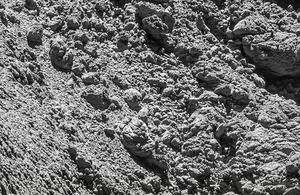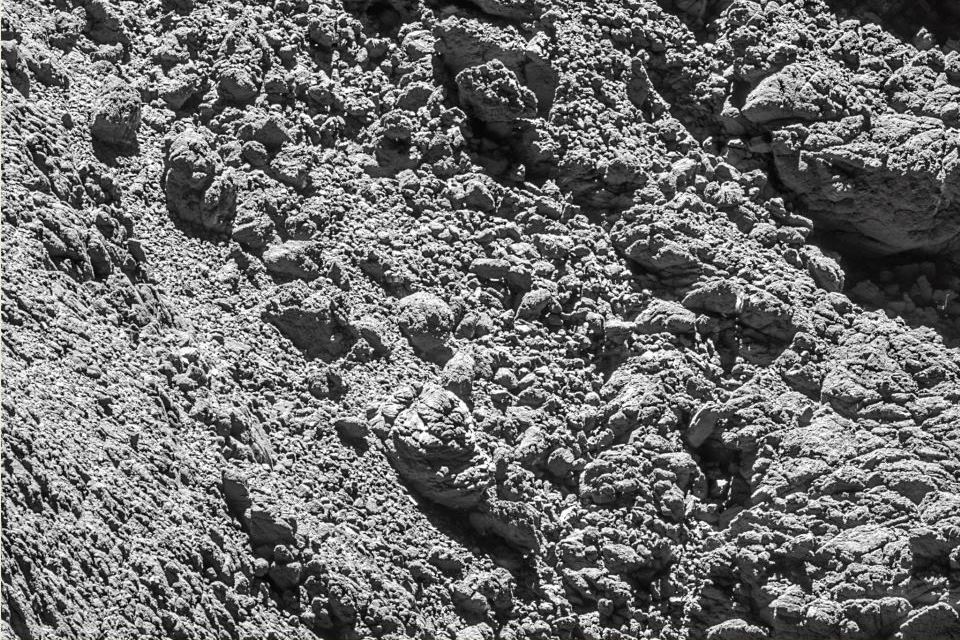Finding Philae
Rosetta's comet lander, Philae, has finally been found less than a month before the mission ends.

Can you spot Philae? Credit ESA
On Friday 2 September, Rosetta’s high-resolution camera showed the Philae lander’s location on Comet 67P/Churyumov–Gerasimenko (Comet 67P) for the first time. Philae was spotted over 2km away from the OSIRIS narrow-angle camera on the surface of the comet.

Can you spot Philae? Credit ESA
Rosetta deployed the Philae lander on 12 November 2014. It was last seen at Agilkia, before flying again and ending up in Abydos. Establishing communication with Philae was difficult with its primary battery being exhausted and the lander went into hibernation. Philae briefly communicated with Rosetta in June and July 2015 as the comet came closer to the Sun and more power became available.
Establishing communication with the lander was difficult; however these new images show the cause was Philae’s orientation.

Finally found [Credit ESA]
The news comes less than a month before Rosetta ends its mission and descends onto the comet’s surface.
During Philae’s first bounce off of the comets surface, UK-led instrument Ptolemy sampled ambient gas and detected main components of coma gases, including water vapour, carbon monoxide and carbon dioxide. Smaller amounts of carbon-bearing organic compounds were also detected, such as formaldehyde.
Ian Wright, Professor of Planetary Sciences at the Open University and Principal Investigator for the Ptolemy instrument, said:
Finding Philae is strangely rewarding and emotional news. For those of us who worked for so long on this project it is great to see the spacecraft one more time. This will give all of the Ptolemy team a sense of closure on the mission.
Rosetta and the UK
With funding from the UK Space Agency and the Science and Technology Facilities Council (STFC), Rosetta is a mission with significant UK involvement from industry and science.
Philae’s instruments include a gas analyser, the Ptolemy instrument, which was designed and built by teams from the UK’s Science and Technology Facilities Council’s RAL Space and the Open University. Ptolemy has an on-board oven for heating comet samples and collects data to analyse the relationship between water ice on comets and the Earth’s oceans. Ptolemy also studies the nature of organic material on the comet and uses this to investigate the relationship with similar materials from other Solar System bodies.